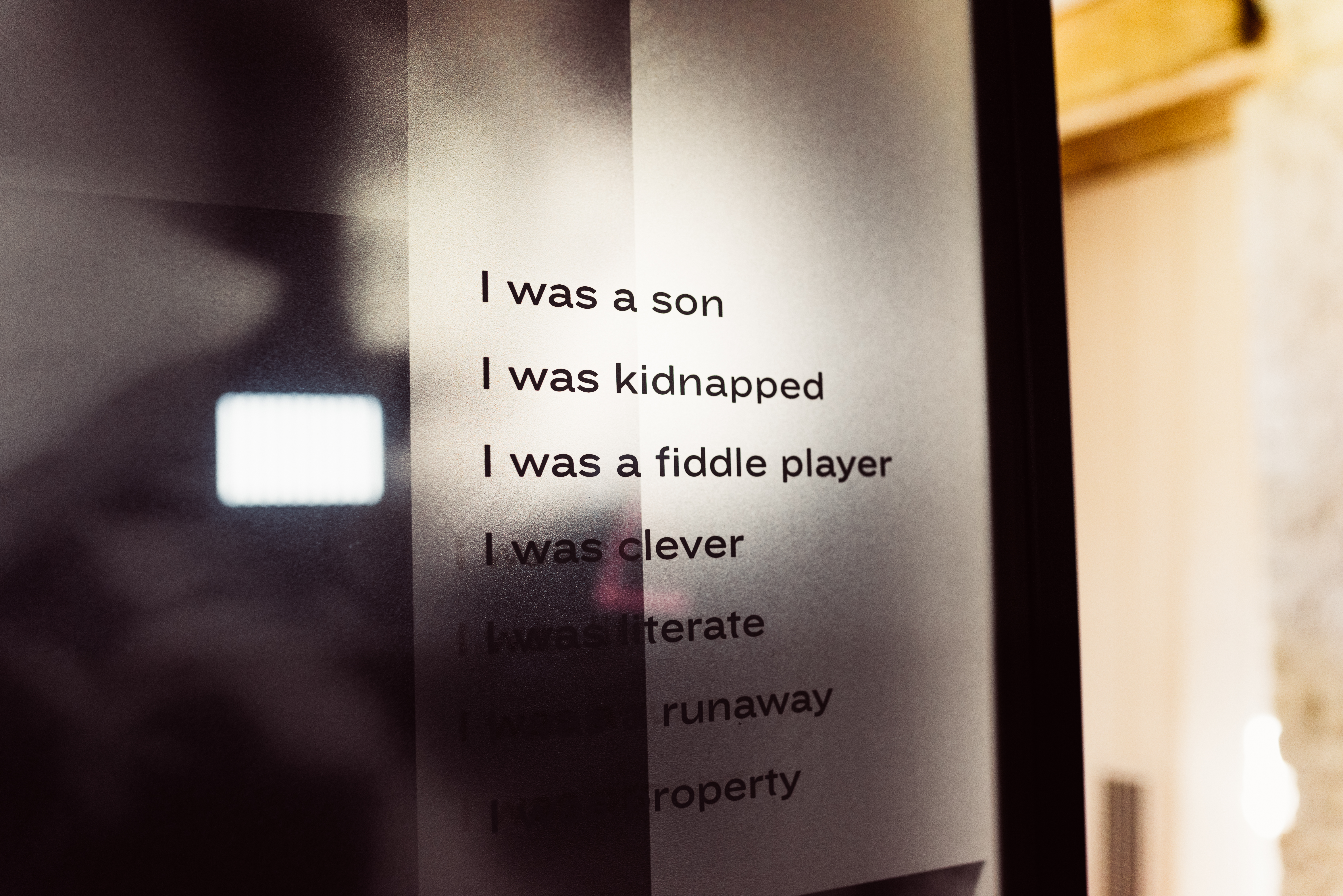The Mere Distinction of Colour
1. Archaeological discoveries show that enslaved people were more than merely property of their masters
Mary Minkoff explains the significance of the "Liberty" pipe
The discovery of a clay pipe with “Liberty” inscribed on it illustrates that slaves were more than property, more than commodities of labor. They were human beings with families, thoughts, hopes, and dreams. Archaeologists consider this pipe to be an aspirational item for its enslaved owner, representing the chasm between their understanding of “Liberty,” and the actual ability to participate in and enjoy these rights and freedoms.

Artifact case in the cellars of the Madison house
2. At its height, slavery was a $3 billion-plus industry and a major engine of the U.S. economy
The economy of slavery wasn’t relegated to the South: it crossed state lines, and even states with low slaveholding populations were profiting from the labor of the enslaved. From tobacco cultivation in Virginia to shipbuilding in Rhode Island, industries throughout the states both supported, and were supported by, slavery. By 1850, 80% of American exports were the product of slave labor. The estimated value of enslaved people increased 500% between 1790 and 1860, from $200 million to around $3.059 billion. Slavery’s profitability far outweighed the moral outrage it engendered.
Intranational slave trade infographic
The South in particular was so reliant on slavery that after the passage of the
13th amendment
freed the slaves, many Southern states leveraged the vague nature of the amendment text, "Neither slavery nor involuntary servitude, except as a punishment for crime whereof the party shall have been duly convicted, shall exist within the United States, or any place subject to their jurisdiction," to criminalize African Americans and reinstitute them as a free labor source.


3. The Constitution, rooted in freedom and liberty, actually protected slavery

Excerpt from the United States Constitution
The word “slavery” never appears in the United States Constitution. This intentional omission meant that the Constitution implicitly protected slavery without explicitly mentioning it. This set the stage for the American founding to become one of history’s most confounding contradictions. How do we reconcile so many brilliant minds pledging to be champions of individual rights on one hand, then, on the other, allowing human beings to be reduced to chattel?

Panel from The Mere Distinction of Colour Exhibition
4. Living descendants are helping reshape the interpretation of slavery
In 2007, while standing on the terrace of the recently-renovated Madison mansion, cultural anthropologist, Iris Ford, looked out over the property’s South Yard: the area where the domestic slaves would have lived and worked. Her ancestors had been enslaved at Bloomfield, an adjacent plantation, and her grandfather had worked at Montpelier when it was privately owned by Marion duPont Scott. Ford asked a pointed question: “Where are my people? You spent $24 million on the Madisons, and all my people get are dead grass and railroad ties?”
Descendant, Iris Ford, talks about the importance of honestly interpreting slavery
For the previous seven years, Montpelier had been actively engaging with its descendant community, born out of Rebecca Gilmore Coleman’s interest in, and pursuit of, the reconstruction of the
Gilmore Cabin
, her grandfather’s home, located right across the street from Montpelier’s main gates. However, Ford’s question crystallized the lack of representation of the African American experience on the property and set Montpelier on a journey to interpret a fuller, more accurate American story.









5. Stories of enslaved individuals live on through their descendants
One of the most moving ways to honor the history of the enslaved individuals is through the stories of their descendants. Nowhere else will you have the opportunity to connect to the past in such a visceral way, with stories of enslaved people relayed in the voices of their living descendants. Authentic voices give life to true tales of the trials and hardships of their ancestors who toiled as property at Montpelier and on surrounding plantations.
Hugh Alexander tells the story of his ancestor, Paul Jennings, a Madison slave
6. We live with the legacies of slavery every day
Police body camera footage
From mass incarceration, to the achievement gap, to housing discrimination, and the vicious cycle of poverty, violence, and lack of opportunity throughout America’s inner cities, the legacies of 200 years of African American bondage are still with us.



To achieve the version of America we all aspire to, it’s imperative we understand our history and use that knowledge to move forward. It will take a concerted effort from all of us to be what we want to be as Americans: exceptional.